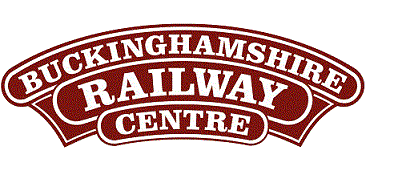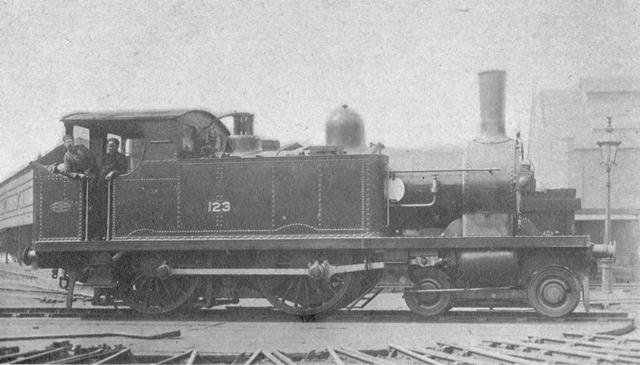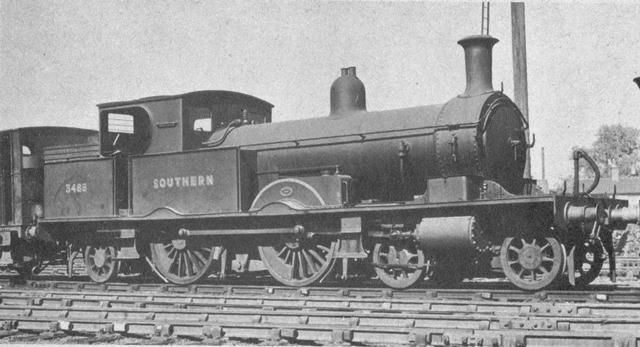
BRC Website Home
Quainton Virtual Stockbook
Rebuilt LSWR 0298 Class 2-4-0 Well Tank No. 0314
Miscellaneous Quainton Publications
The Centenary of the Beattie Well Tank at Quainton

BRC Website Home
Quainton Virtual Stockbook
Rebuilt LSWR 0298 Class 2-4-0 Well Tank No. 0314
Miscellaneous Quainton Publications
The Centenary of the Beattie Well Tank at Quainton
Successors to the Well Tanks

Photo: |
|
It is a happy coincidence that it is still possible to see in working order preserved examples of the successors to the Beattie tanks in their two major roles; as London suburban work horses and as Cornish branch line veterans; although the engines which took over the duties of the well tanks are not, unfortunately, preserved at Quainton! The locomotives which displaced the 2-4-0Ts in London were designed by William Adams. He produced a much heavier engine to cope with the longer trains and demanding schedules of the commuter services in the Metropolis and the first of his new design appeared in July 1879. It was numbered 46 and was a 4-4-0 side tank built, like so many of the well tanks, by Beyer Peacock & Co of Manchester. Twelve 46 Class engines were constructed and they weighed over 50 tons apiece compared with the 33 tons of a Beattie well tank. The choice of a 4-4-0T was not too surprising because the Metropolitan and District Railways used engines with this wheel arrangement and the South Western had purchased six 4-4-0 Met tanks for use on the Plymouth line opened in 1876. The usual problem with a 4-4-0T is that it has a limited capacity for fuel and water and to remedy this the 46 class were rebuilt as 4-4-2Ts between 1884 and 1886 with enlarged coal bunkers and well tanks. This wheel arrangement was adopted by William Adams for the large class of fine engines which took over the London suburban services from the Beatties. Seventy one of these elegant locomotives known as the 415 class were built between 1882 and 1885 and with 0-4-4T's built later they displaced the well tanks. The subsequent history of three of the 415 class has a strange parallel with the three Beattie tanks because sixty eight of the 4-4-2Ts were withdrawn in the 1920's and three survived for forty years longer! These three engines were 3125, 3488 and 3520. They were retained to work all the traffic on the severely curved and graded Lyme Regis branch and like the Beatties at Wadebridge appeared to be irreplaceable! The preserved engine is No. 488 and it can be seen on the Bluebell Railway in Sussex [Note 1]. It had a charmed life. In September 1917 it was sold by the LSWR to the Ministry of Munitions. It served at the Ridham Salvage Depot near Sittingbourne until it was purchased in April 1919 by the East Kent Railway, an independent company which worked coal traffic from a number of Kent pits. In 1946 the Southern Railway purchased the engine as a spare to the pair of 415 class 4-4-2Ts they already had and it was moved from Shepherdswell to Eastleigh for repairs. After nearly thirty years it received its old number 488, plus 3000, and returned to stock as 3488 on the Axminster to Lyme Regis trains. Although the other two 415 class engines were withdrawn and scrapped in 1961, 488, which had become B.R 30583, was saved by the Bluebell Railway. It was repainted in LSWR livery at Eastleigh, and put into active preservation at Sheffield Park. In 1972 an extensive and expensive overhaul was carried out at Swindon and 488 is now giving excellent service to and from Horsted Keynes [Note 1]. It should be noted that one of the successors to the 415 class tried on the Lyme Regis branch was the Ivatt Class 2 2-6-2T of which there is an example, 41298, at Quainton [Note 2]. The successors to the Beattie tanks at Wadebridge were three small 0-6-0PT's with outside cylinders, the Great Western Railway's 1366 class of which six were built in 1934 at Swindon. The sole survivor is No. 1369 which is preserved on the Dart Valley Railway where it has recently been overhauled and repainted [Note 3]. The first of these six coupled tanks to arrive at Wadebridge was 1368, early in May 1962. After successful trials over the Wenford Bridge mineral line on 12th May it was joined by 1367/9, the three engines being transferred from Weymouth where they had shared the operation of traffic over the branch to the Quay. The 1366 class were built primarily for shunting duties at Swindon Wagon Works and their lightweight of 35 3/4 tons and short wheelbase of 11 ft made them eminently suitable as replacements for the Beattie well tanks. Their life was, however, very short because they were soon displaced by new 204 h.p diesel mechanical locomotives. No. 1369 was withdrawn in November 1964 and it was saved from the scrapyard by the fund raising efforts of Mr A J Weary of Plymouth. The engine was delivered to Totnes on 20th February 1965 under its own steam and was the last BR steam locomotive to cross the Royal Albert Bridge from Cornwall. |

Photo: |
|
Reference: |
|
Notes: The text in this Quainton Railway Society publication was written in 1974 and so does not reflect events in the 40+ years since publication. The text and photographs are repeated verbatim from the original publication, with only a few minor grammar changes but some clarifying notes are added as deemed necessary. The photos from the original publication are provided as scans in this internet version of this long out of print publication. |
Text © Quainton Railway Society / Photographs © Quainton Railway Society or referenced photographer
Email Webmaster
Page Updated: 15 October 2017